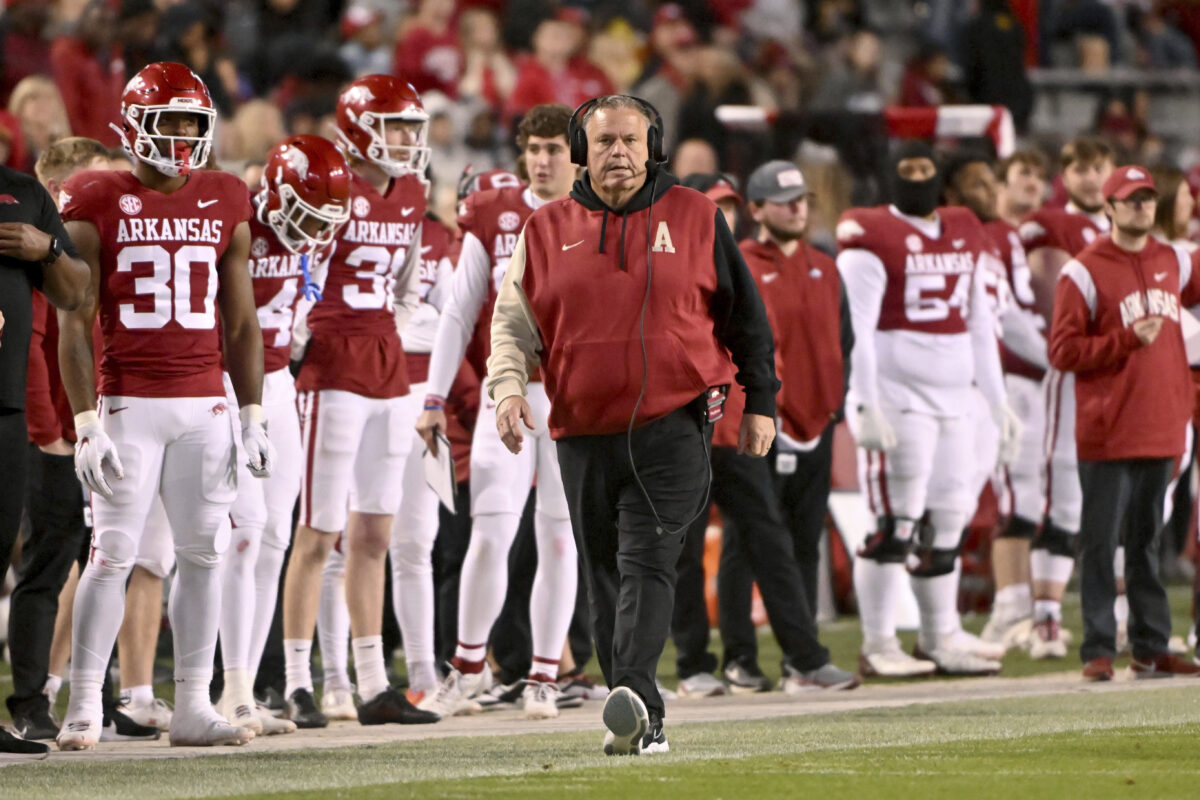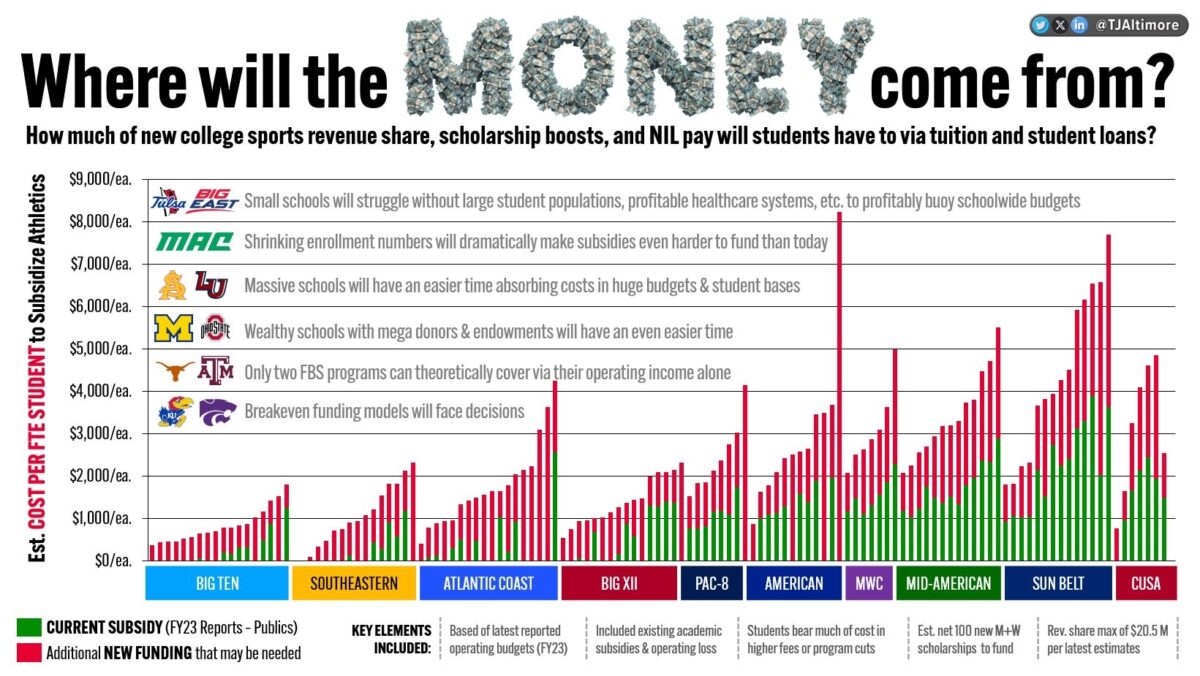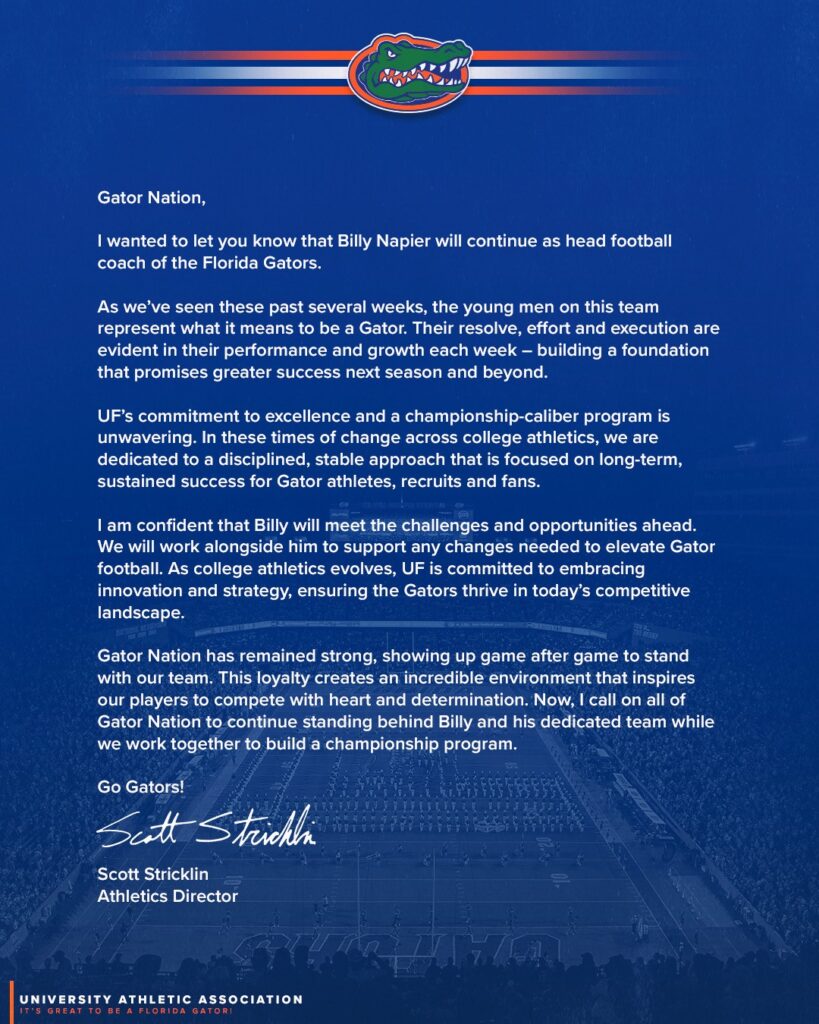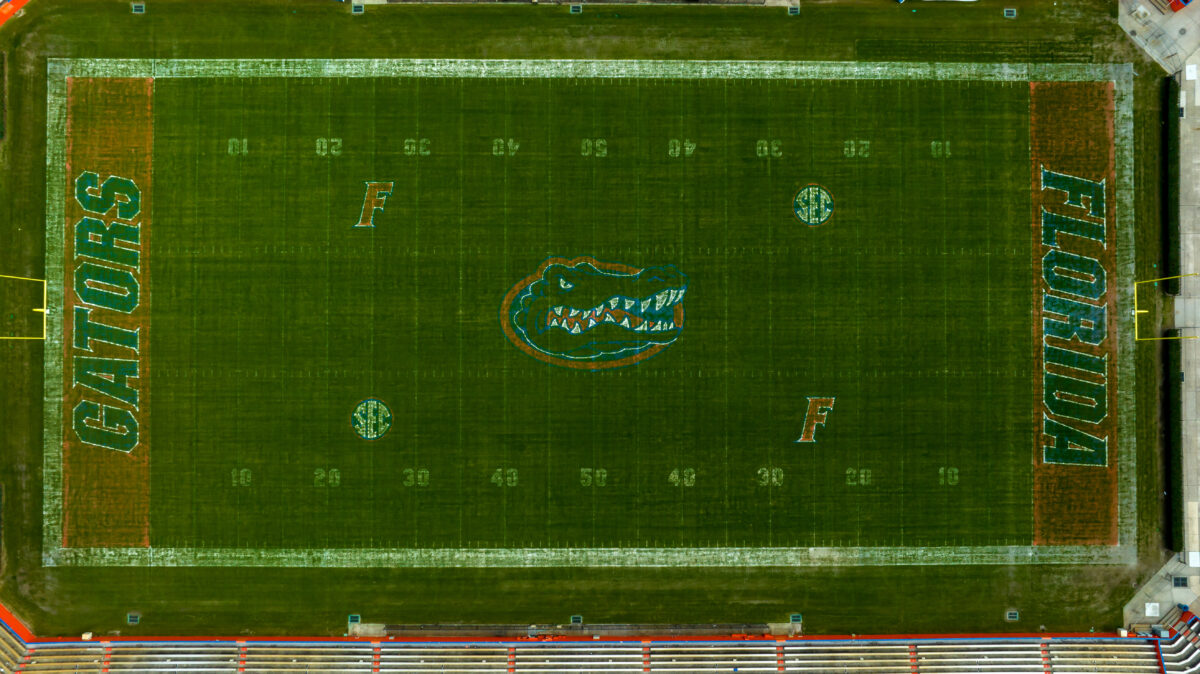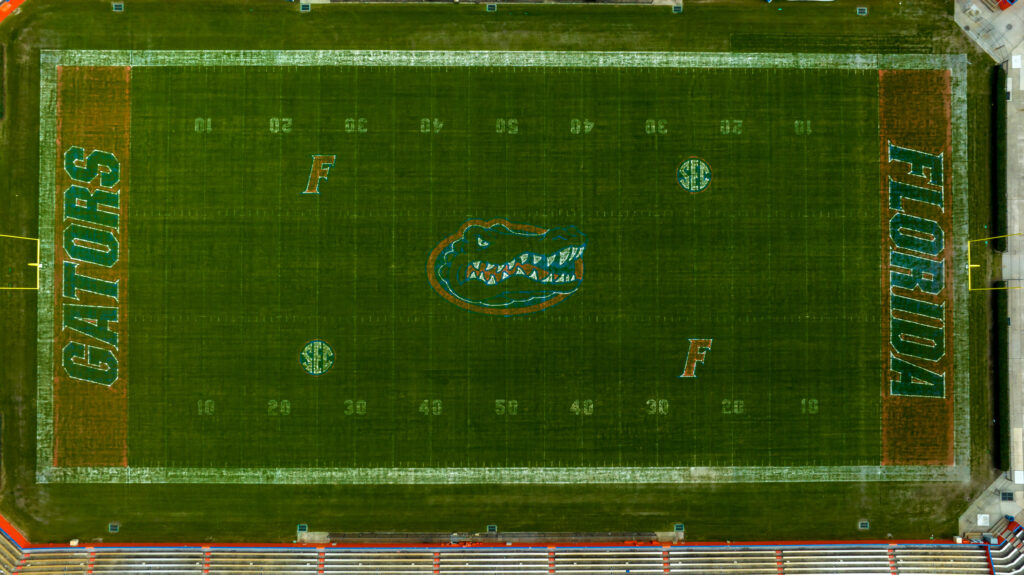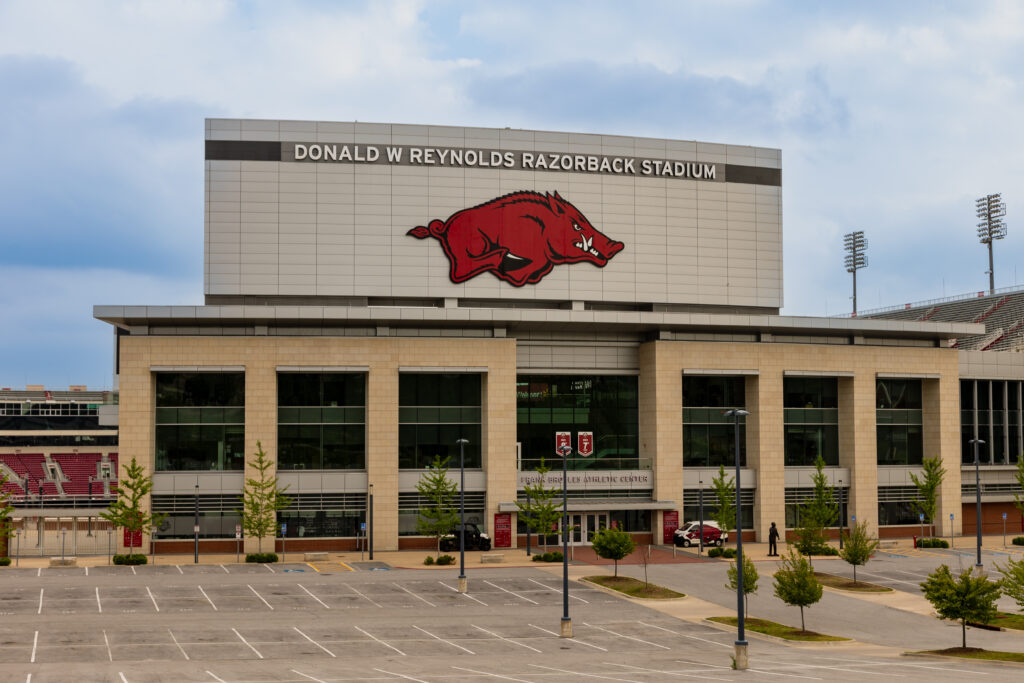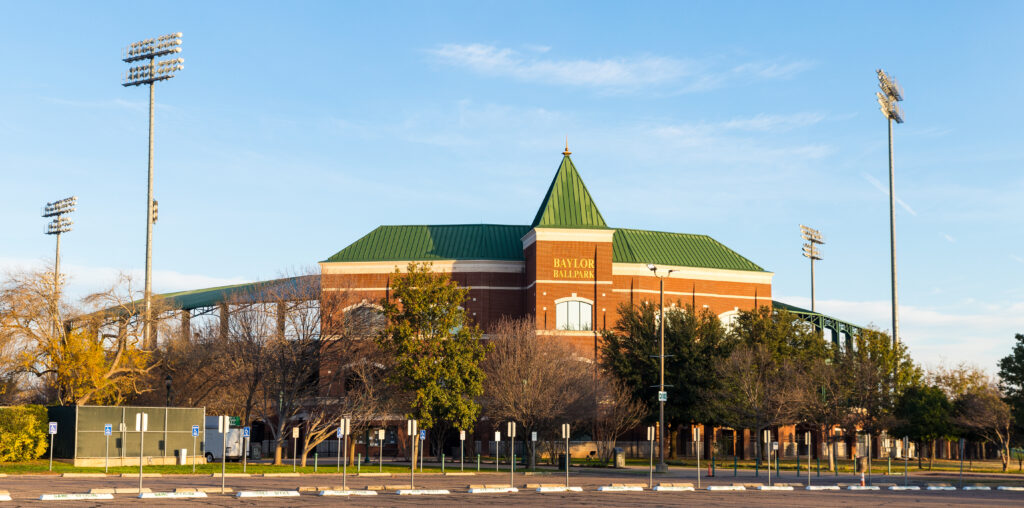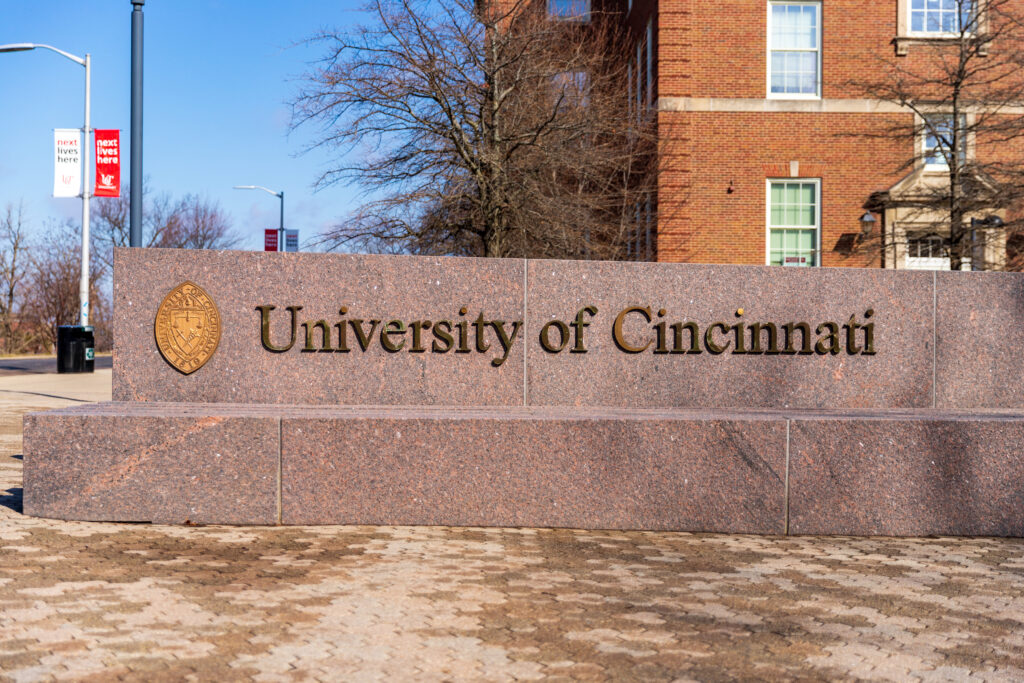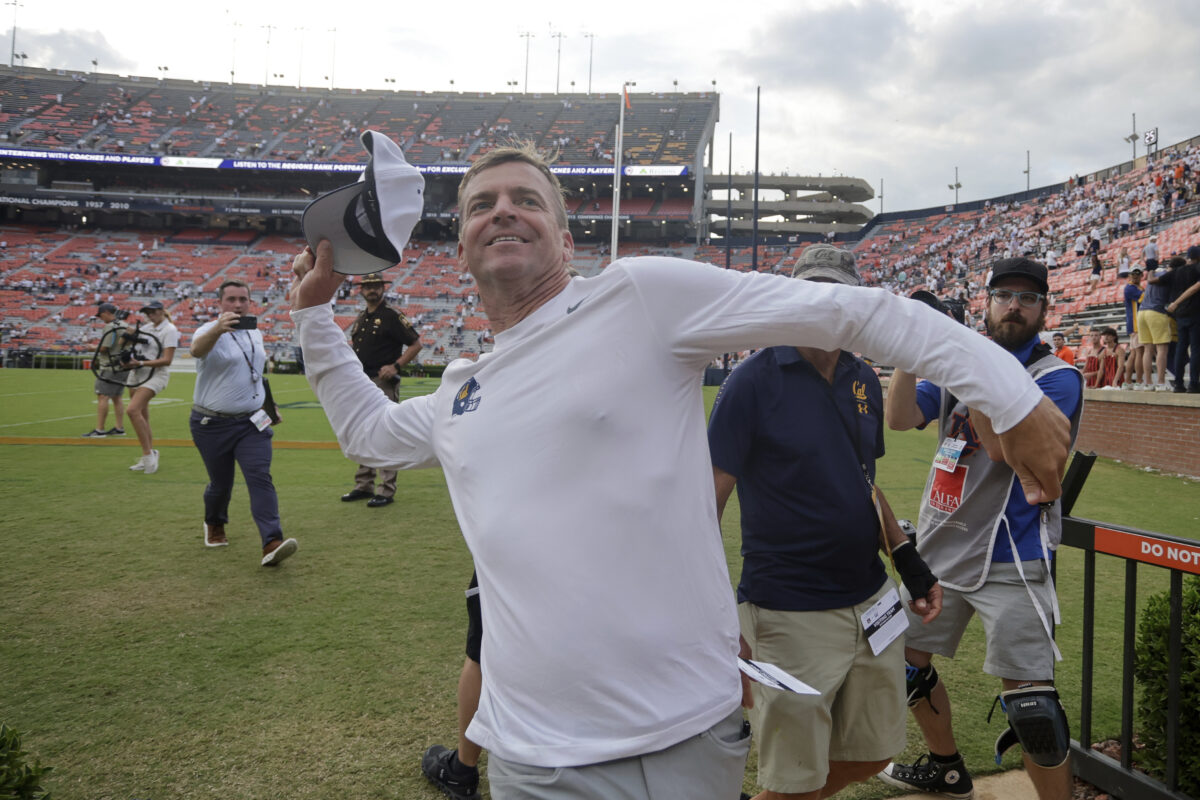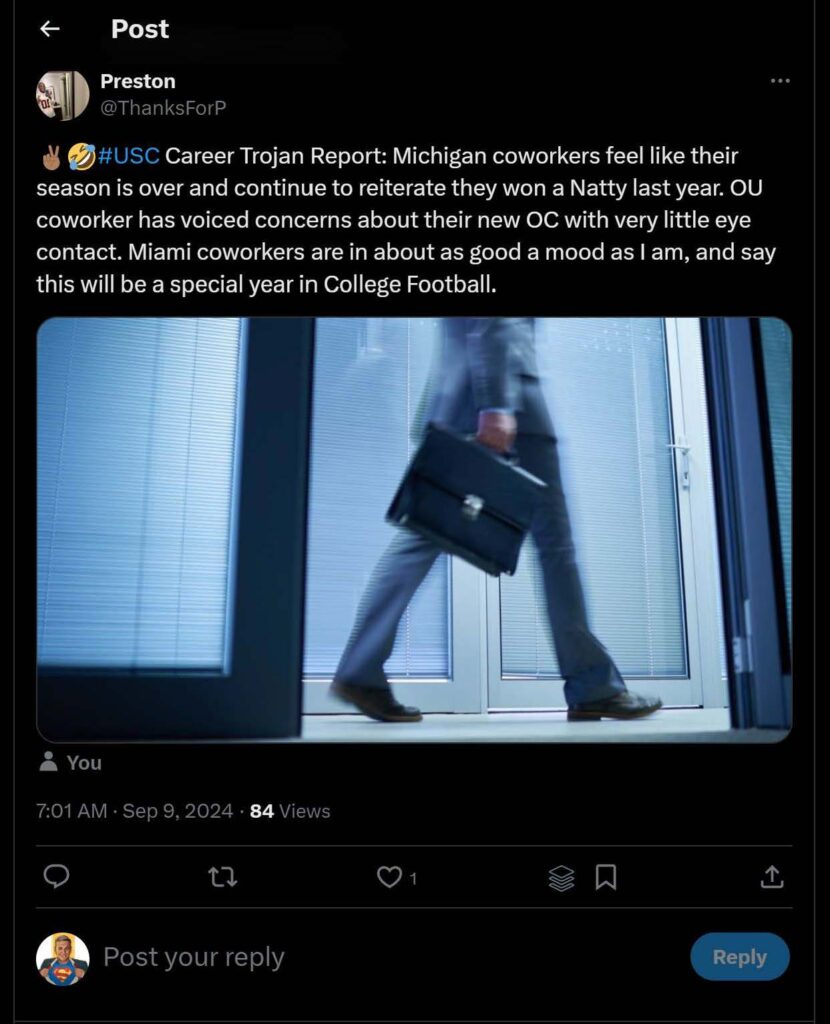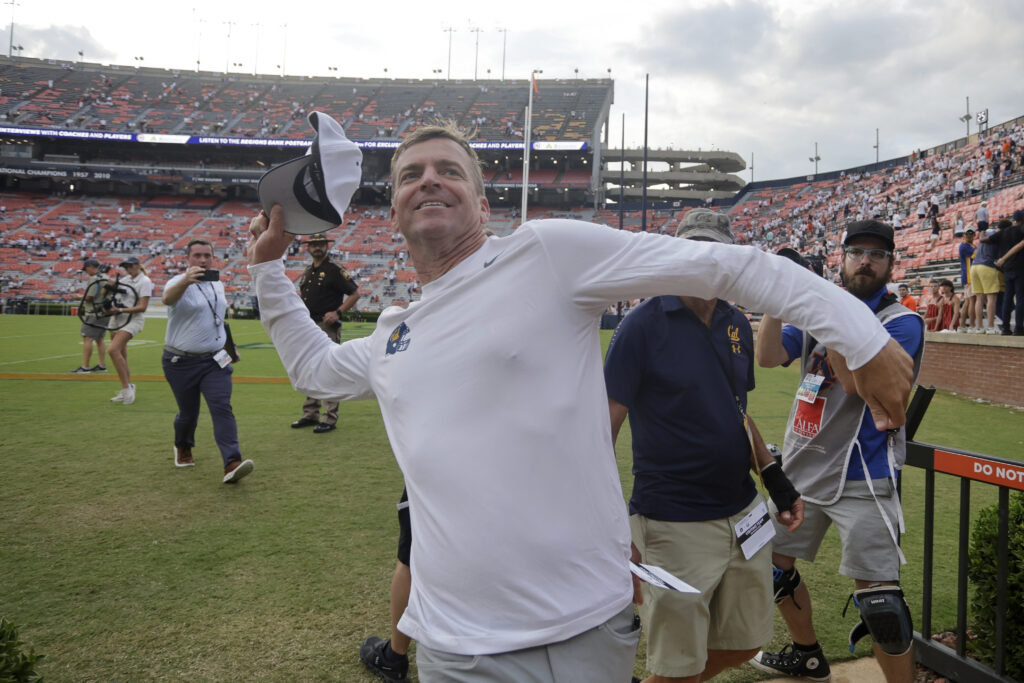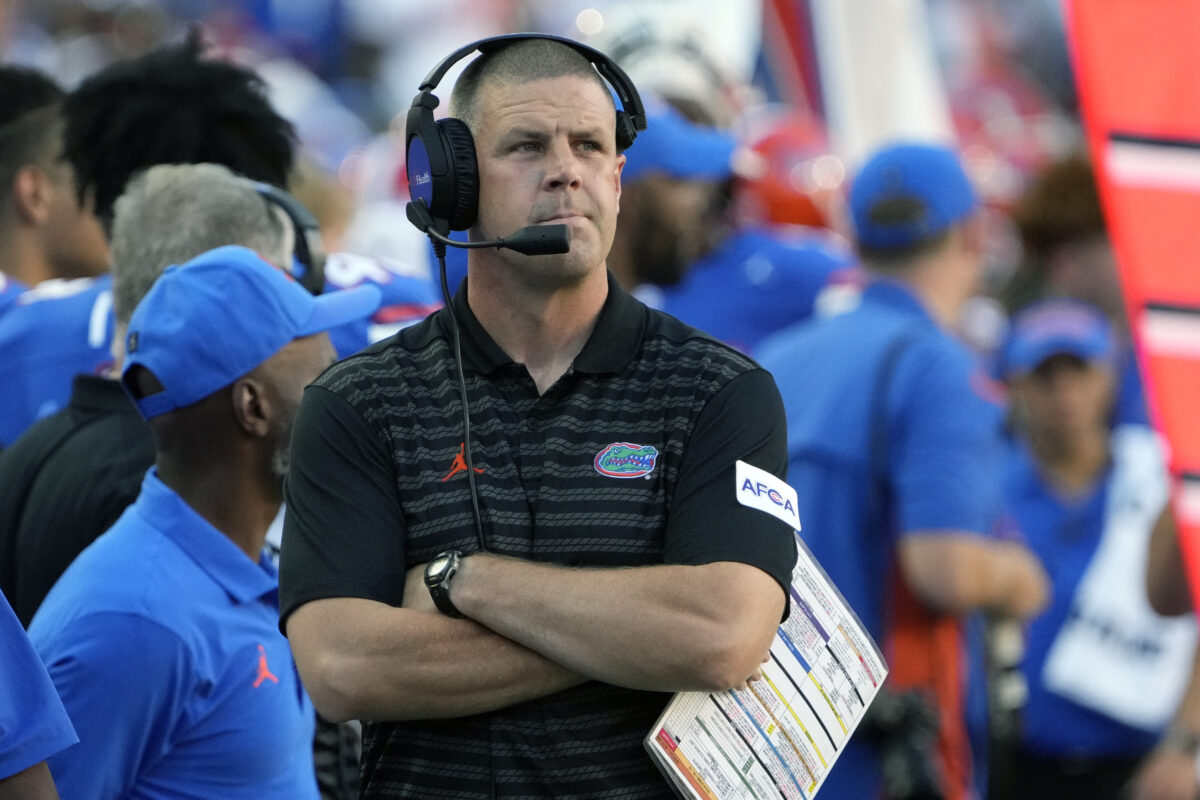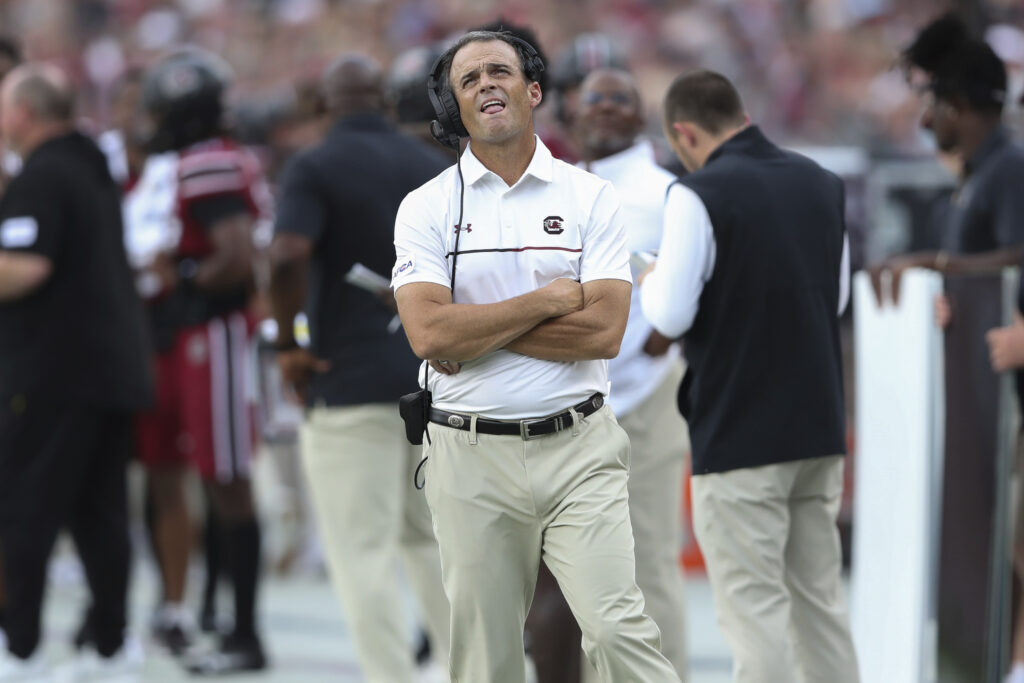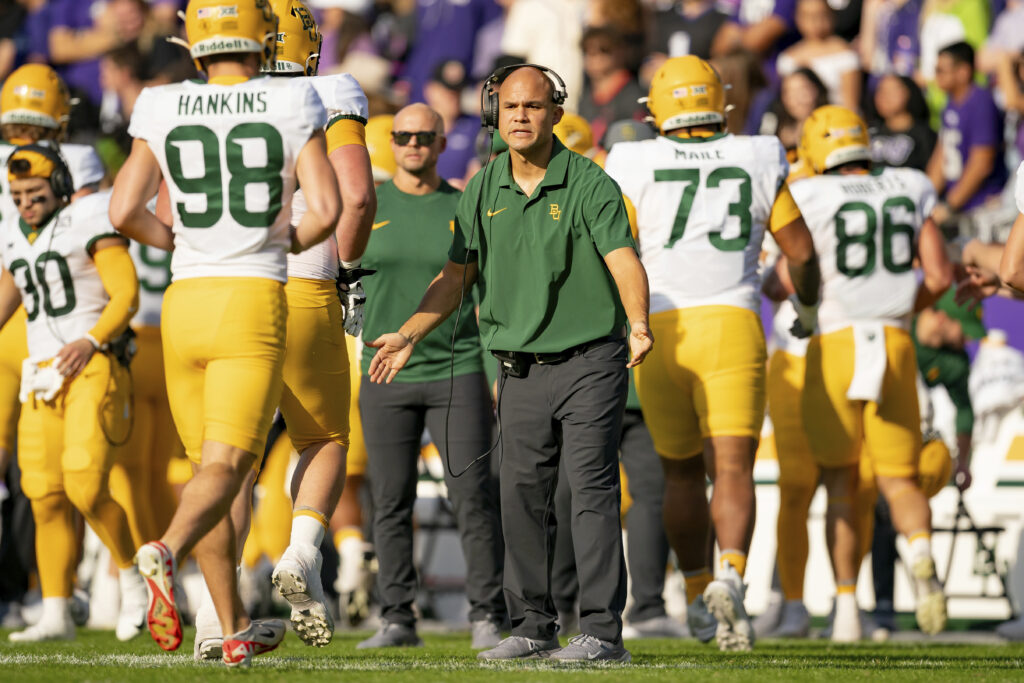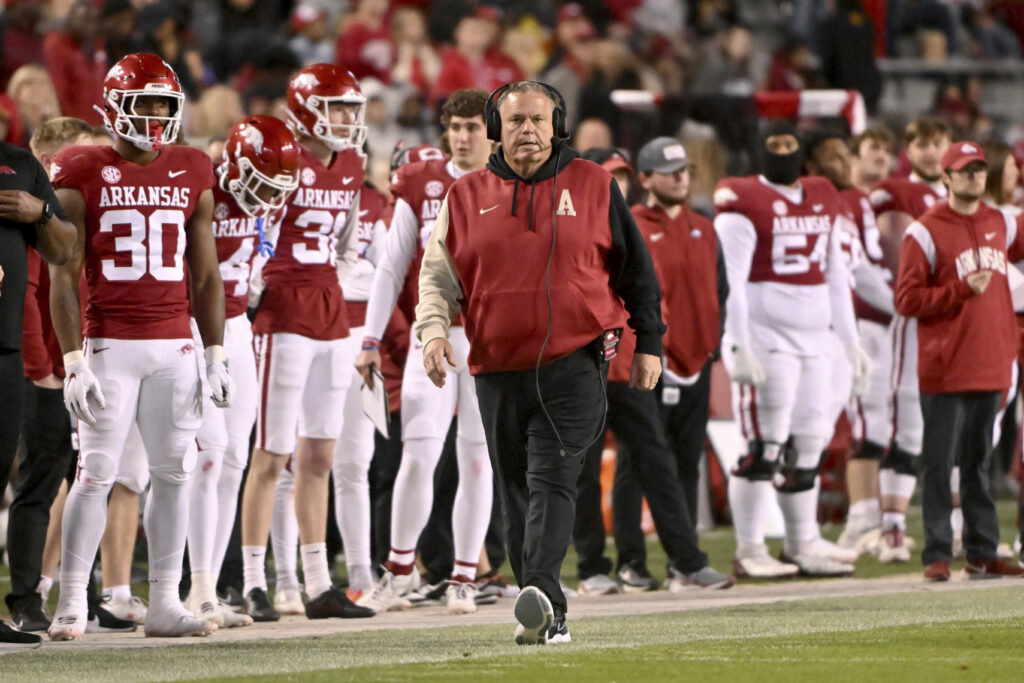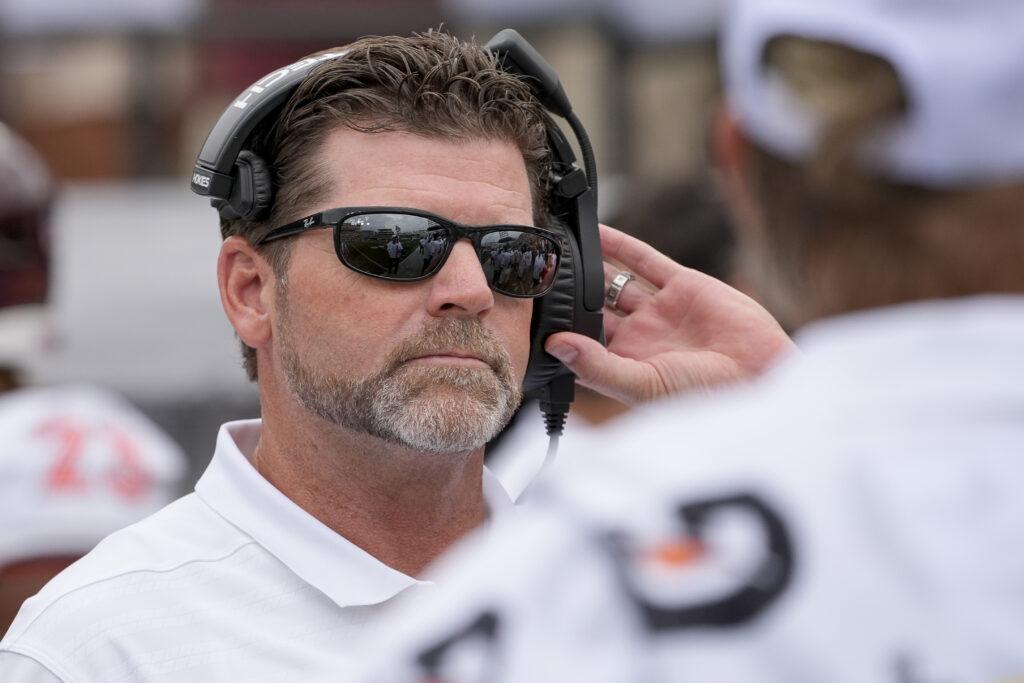Blog Article
Arkansas Football 2025 Season Preview: Sam Pittman’s Survival Test Begins Now
Sam Pittman is coaching for his job.
After five seasons in Fayetteville, the Arkansas head coach finds himself in an impossible position. He’s 30-31 overall and 14-28 in SEC play. ESPN senior writer Adam Rittenberg placed Pittman in the “Can’t backslide” tier on his coaching hot seat rankings, writing that “Pittman is just 30-31 and 14-28 in SEC play, and might need to match or exceed his 2024 output to secure his spot for 2025.”
The math is simple: another mediocre season equals a coaching change. The 2025 season is no longer about potential. It’s about survival.
The Quarterback Question Gets Answered
Taylen Green is coming back.
The most important decision Arkansas made this offseason was retaining its 6-foot-6 dual-threat quarterback for his senior season. “I’m deeply thankful to God for putting me in the position I am today,” Green wrote in a social media post announcing his return. “I appreciate everything Coach Pittman has done for me over the last year.”
Green’s 2024 numbers tell the story of untapped potential:
- 3,756 total yards of offense (second in program history)
- 3,154 passing yards and 15 touchdowns
- 602 rushing yards and 8 rushing touchdowns
- 9 interceptions and 5 fumbles lost
That turnover problem? It’s the difference between mediocrity and breakthrough. Green acknowledged this heading into spring practice: “It starts with the film room and getting on the same page, getting on the same mode of understanding why I made the decision.”
The quarterback room behind Green remains thin. Redshirt freshman KJ Jackson appears positioned as the primary backup, with true freshman Madden Iamaleava providing depth. Green’s health becomes paramount to everything Arkansas hopes to accomplish.
Complete Roster Reconstruction Through the Portal
Arkansas lost over 20 scholarship players to the transfer portal.
They responded by bringing in what Rivals ranks as the eighth-best transfer class in the nation. The departures included every major contributor from the receiving corps, creating the most dramatic roster overhaul in college football.
The numbers tell the story:
- Lost Andrew Armstrong (1,140 yards receiving)
- Lost Isaac TeSlaa, Isaiah Sategna, and Luke Hasz
- Added 7 transfer receivers and 3 high school recruits
- Targeted the offensive line after allowing 2.1 sacks per game
- Reinforced defensive line and secondary through the portal
The receiver situation got complicated. According to ActionNetwork’s Collin Wilson, “the wide receiver unit came to Bobby Petrino and Sam Pittman after the season and said, ‘Taylen Green’s got to go or we’re out of here.'” The coaching staff publicly backed Green and moved forward with complete reconstruction.
This wasn’t just roster management. This was program surgery.
Defense Demands Immediate Improvement
The 2024 defense was historically bad by Arkansas standards.
They allowed 25.0 points and 376.1 yards per game while finishing with a minus-eight turnover margin. The unit struggled particularly against elite passing offenses, exemplified by allowing 562 yards to Ole Miss in a 63-31 loss.
The pass rush problems were glaring:
- Only 26 sacks in 13 games (2.0 per game)
- Ranked 13th in the SEC in quarterback pressure
- Lost pass rush specialist Landon Jackson to transfer
- Must replace five of the top seven tacklers
Defensive coordinators Travis Williams and Marcus Woodson return for their third season, providing scheme continuity. The linebacker corps remains solid with returning contributors. But the defensive line and secondary feature multiple new faces who must gel quickly.
Special teams ranked 84th nationally in efficiency. In a conference where games are decided by three points and missed kicks end seasons, that’s unacceptable.
The Schedule From Hell Awaits
Arkansas faces three College Football Playoff teams from 2024.
Notre Dame, Texas, and Tennessee all made the playoffs. Both games against the Volunteers and Longhorns will be on the road. Arkansas heads to Austin “for the first time since 2008 and just the third time since leaving the Southwest Conference.”
The early-season gauntlet looks brutal:
- August 30: Alabama A&M (home)
- September 6: Arkansas State (Little Rock)
- September 13: at Ole Miss
- September 20: at Memphis
- September 27: Notre Dame (home)
October and November offer no relief. Road games at Tennessee, LSU, and Texas. Home contests against Texas A&M, Auburn, Mississippi State, and Missouri that offer opportunities but zero margin for error.
This schedule doesn’t take into account your rebuilding project. It will expose every weakness and punish every mistake.
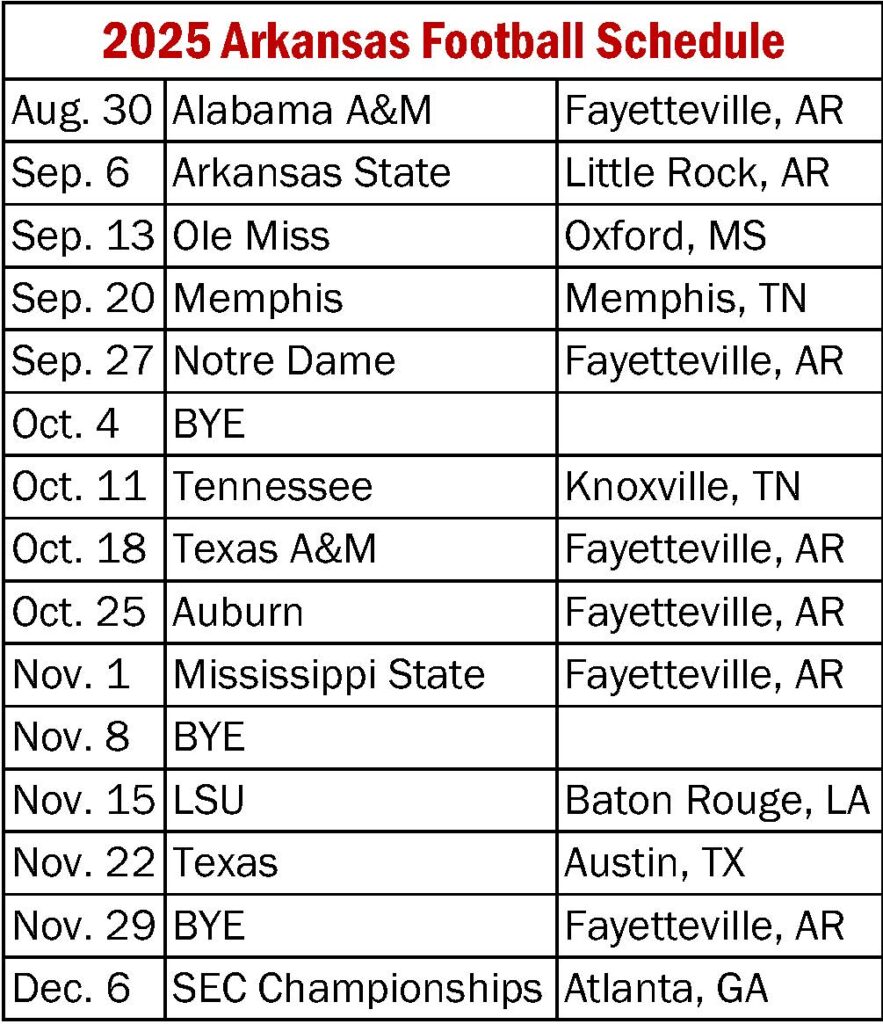
Recruiting Shows Promise, Development Remains Key
The 2025 recruiting class ranks 27th nationally.
That represents solid progress in talent acquisition under Pittman. The class features 24 commitments, including several players expected to compete for immediate playing time. Combined with transfer portal additions, Arkansas created depth across multiple position groups.
Bobby Petrino enters his second season as offensive coordinator with increased familiarity with the system. As Sports Illustrated’s Andy Hodges reported, Petrino stated regarding Green: “Taylen knows the offense. He’s much more comfortable in it.”
This continuity matters more than people realize:
- Second year in Petrino’s complex system
- Established relationships between the quarterback and the coordinator
- Proven track record of offensive improvement in year two
- Reduced learning curve for skill position players
The academic excellence continues under Pittman, with the program maintaining high classroom standards while competing at the highest level. This provides recruiting advantages that extend beyond wins and losses.
Cultural Foundation Under Pressure
Here’s something most people don’t realize about Sam Pittman.
As College Football News noted, “Hand raised high, who else didn’t think in any possible way that Sam Pittman would be the third-longest-tenured head coach with his current SEC team? Kirby Smart has been around the longest with Georgia, Kentucky’s Mark Stoops is second, and Pittman is tied with Missouri’s Eli Drinkwitz and Lane Kiffin of Ole Miss for third.”
That tenure provides both advantages and pressure. The familiarity with SEC competition creates recruiting and operational benefits. But the lack of sustained success relative to program expectations increases scrutiny.
Green’s leadership development becomes crucial with significant roster turnover. As he noted regarding his role with new players: “Coaches aren’t out there when we’re throwing, so I’ve got to tell them the depth and when to cut.”
Veteran presence matters when everything else is new.
Success Metrics and Realistic Expectations
Vegas set Arkansas’s win total at 5.5 games.
That reflects the brutal combination of schedule strength and roster reconstruction. Bowl eligibility represents the baseline expectation, with six wins likely necessary for Pittman to survive.
But success extends beyond wins and losses:
- Turnover margin improvement from minus-eight
- Red zone efficiency increases from 58% touchdown rate
- Defensive pressure generation to replace Landon Jackson
- Competitive performances against ranked opponents
The key question isn’t whether Arkansas can compete with Alabama and Georgia. The key question is whether they can consistently beat the teams they’re supposed to beat while stealing one or two they’re not supposed to win.
Close games against ranked teams and improved efficiency in critical situations would demonstrate program progress even if the overall record remains modest.
The Bottom Line: Progress or Replacement
Arkansas football stands at a crossroads.
The combination of quarterback continuity, strategic roster additions, and coaching staff stability creates the framework for improvement. However, the brutal schedule and elevated expectations leave minimal room for growing pains.
Pittman’s survival depends on demonstrating clear progress while navigating one of college football’s most challenging schedules. The pieces exist for modest success, but execution under pressure determines everything.
For Arkansas, 2025 represents both opportunity and ultimatum.
The foundation exists for competitive football, but translating potential into victories remains the ultimate test for a program that has experienced too many seasons of unfulfilled promise. Sam Pittman is coaching for his job, and everyone in Fayetteville is aware of it.
The Next Billion Dollar Game
College football isn’t just a sport anymore—it’s a high-stakes market where information asymmetry separates winners from losers. While the average fan sees only what happens between the sidelines, real insiders trade on the hidden dynamics reshaping programs from the inside out.
Our team has embedded with the power brokers who run this game. From the coaching carousel to NIL deals to transfer portal strategies, we’ve mapped the entire ecosystem with the kind of obsessive detail that would make a hedge fund analyst blush.
Why subscribe? Because in markets this inefficient, information creates alpha. Our subscribers knew which coaches were dead men walking months before the mainstream media caught on. They understood which programs were quietly transforming their recruiting apparatuses while competitors slept.
The smart money is already positioning for 2025. Are you?
Click below—it’s free—and join the small group of people who understand the real value of college football’s new economy.
